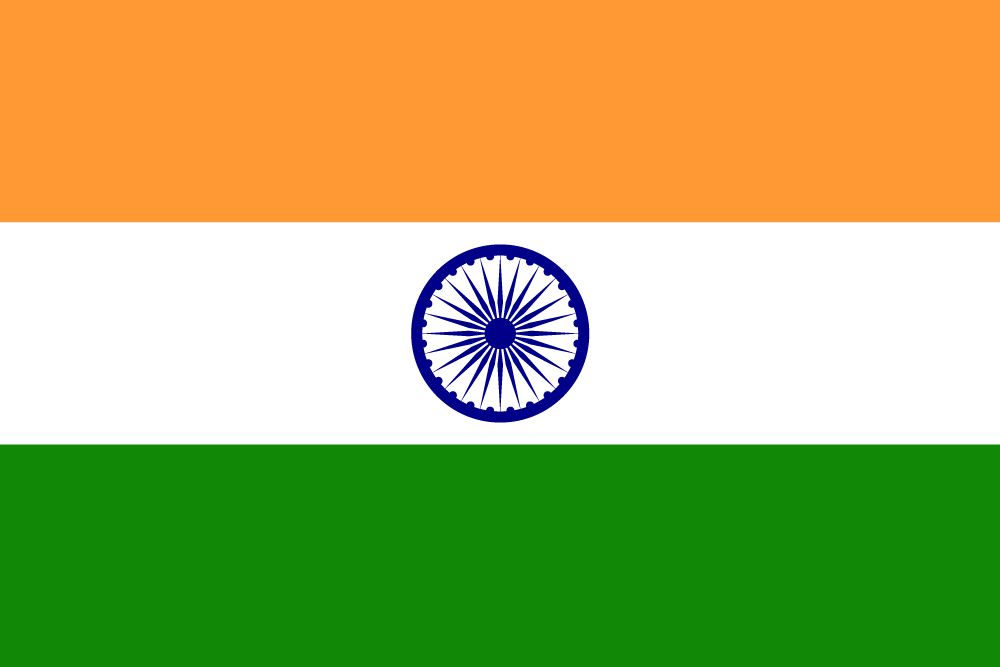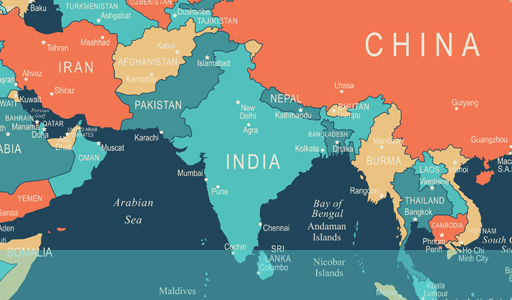User Research in India
Remote or lab-based user research in India, with real customers and local, Senior UX Researchers
India is a large country, and for Western businesses thinking about organising UX research or user research with their clients, it can be a daunting prospect. That is where UX24/7 comes in. We are a global design research agency that operates with our own team of Senior UX Researchers.
All our Senior UX Researchers have been evaluated as part of their joining process to ensure they have the skills, capabilities and experience to deliver user research and UX Research to the high standards we expect. Our India team consists of male and female senior UX researchers with the capacity to conduct remote, contextual or lab-based user research in India. We also have excellent language coverage so go well beyond just Hindi.
Remote and lab-based user research in India
We run user research and UX Research in India using remote and lab-based facilities.
Remote methodologies
Remote methodologies use online screen sharing technologies, where we have used Zoom and also WhatsApp as a video platform. It’s common to conduct user research in India on mobile devices, and Zoom is well understood and works well. However, in some cases, WhatsApp has been used where the participant lacked familiarity with technology in general.
Lab-based testing
For lab-based testing, the majority of our work has been carried out in New Delhi. This is generally driven by the location of our customers’ offices, with convenience playing a significant role in the decision. New Delhi has a population of 10.9 million, and, larger still, is Mumbai with 12.7 million, which is also a popular location.
City and regional testing
These cities only tell part of the story of India. With such a vast country, with multiple regions, languages spoken and customs, it is crucial to consider your audience carefully. About 90% of the research we carry out in India is delivered remotely—whether discovery, generative or evaluative, i.e. user research. This is because our customers want to speak to people across the geography, and remote is the most cost-effective way.
Communication
In all cases, we provide a viewing experience that includes picture-in-picture video and, where required, simultaneous translation into your native language. Recordings of the sessions are also supplied in your local language and with the Indian original.
Analysis
Finally, our Senior UX Researchers provide a detailed session analysis. Our deliverables include observations and issues together with analysis and actionable recommendations. Our team also speaks English, meaning we can deliver a playback session with you in Indian or English.
So, what are you waiting for? If you want to conduct user research in India, we can help.
Quick facts about India:
- Main language/s spoken: Hindi (44%), Bengali (8%), Marathi (7%), Telugu (7%)
- Population: 1,391,807,092 (est. 2021)
- Capital City: New Delhi
- Other Major Cities: Mumbai, Kolkata, Chennai, Bangalore, Hyderabad
- Currency / monetary units used: Rupee
- Literacy: 77.7% (2022 est.)

UX Research and User Research in India
Punctuality
When conducting lab-based user research in India, participants are scheduled to arrive 20 minutes early to allow for traffic. This is particularly important in all major cities including New Delhi. However, participants are usually punctual for remote sessions, so no special measures need to be taken.
Reward
Cash incentives are not mandatory, with gifts often being given instead. Vouchers are also acceptable, which is very useful when carrying out remote user research in India.
Detailed participant recruitment
With a widely diverse culture, it’s vital to define comprehensive specifications to ensure the recruitment of the desired categories of participants. For this reason, it’s often best to conduct UX research in India remotely to gain coverage across the vast geography. It can be costly to carry out research projects in multiple cities face-to-face.
Mobile communication
Although Indian people use email when recruiting, we tend to ask for a mobile number. This means we can use WhatsApp to communicate with participants, a method with which they’re already familiar. We have found Indian participants to be more responsive to mobile communications.
Culture of sexes
It is crucial to use a female moderator if you intend to conduct research with female participants in India. Even then, you may find a male partner or family member controlling whether the person will attend.
Negotiating discussion
Indians have a habit of thinking aloud, which is great for user research but can cause problems during focus group sessions with everybody talking at once. Participants must understand the need to speak one at a time to ensure the integrity of the feedback.
Annual Festivals
There are several major festivals in India, which are celebrated for several days. These include Diwali (5 days Oct/Nov), Ganesh Chaturthi (11 days Aug/Sep) and Onam (10 days Sep).
Religion and Culture
India is made up of various religions, with Hinduism being the most popular, followed by Islam, Christianity and Sikhism. Care should be taken not to upset any religious sensitivity.
The table below provides timings for the major public holidays in India that apply to most of India. There are far more regional holidays, and we will advise you about any that impact your project timeline before work begins.
| 1st January | New Year’s Day |
| 26th January | Republic Day |
| 11th March | Maha Shivaratri |
| 2 days before Easter Sunday | Good Friday |
| 1st May | Labour Day |
| 15th August | Independence Day |
| 2nd October | Mahatma Gandhi Jayanti |
| 15th October | Vijaya Dashami |
| 4th November | Diwali |
| 25th December | Christmas Day |
Indian culture varies significantly from that of the western world. The culture and behaviour of any country’s people greatly influence the design of digital and physical products—and when it comes to user testing, India is no exception.
There’s quite a range of cultural differences that make a direct impact on UX research, testing, and design.
Local practices and customs
Cultural diversity often requires complex workarounds for such differences. You only have to consider how contrasting our daily lives look and how complicated adapting what we see as a perfectly suitable system could be. From food to driving, etiquette, and typical protocols—providing the UX research India needs for its users is an undertaking for an experienced and appropriately educated specialist.
Local and regional variations
The way we digest information from culture to culture varies considerably. Conventional viewpoints, politics, traditions, practices, and customs—including the food we eat and dietary conventions—mean that some of the smallest things we take for granted could be a big deal for a culturally different audience. Indian diet culture is one such area; Indian Hindus don’t eat beef, and Indian Muslims don’t eat pork. When working in hospitality or entertainment, it’s essential to get all these details in check. To balance and respect all cultures, resolutions that satisfy all needs are built into the best UX design.
Societal conditions
Another significant area of research and user testing in India is the technology available and the expertise of its users. Providing simple and easy-to-understand navigation and operation is paramount in cultures with low technology backgrounds. Not only do the networks, browsers, and hardware have to manage in often less than reliable situations but also in the hands of less experienced and tech savvy operatives.
Language
India has 22 official languages. As you’ll immediately appreciate, that conjures a host of practical issues. Reaching your demographic or the ideal audience for your product or project requires vast understanding. India’s cultural diversity creates complexities in delivery, but all manageable under a well-designed and culturally understanding system.
Sensitivity
With such a diverse range of religions and languages, it’s important to show sensitivity to each community. Creating specific areas for particular belief sets can be an appropriate solution, or separate mirror sites where fitting.
A huge part of UX research is understanding users and their behaviours. To build the clearest picture requires documenting lifestyle, environment, work and home life culture, technology, and a whole lot more.
Given the cultural diversity in India, product teams outside India may have some biases and misconceptions about Indian users which can eventually lead to biased research. When stepping into research in India, it is important to know the reality of the place and the cultural backgrounds of the population from trusted sources.
Here are a selection of the cultural considerations of our Indian participants and how we manage them.
Credibility
On occasion, Indian participants may find it difficult to trust researchers. Many will prefer face-to-face interaction instead of remote operations that reveal much about their home life and living situation. This brings problems for researchers, whose understanding depends on many such aspects. Our teams understand its users and are experts at managing user relationships and operations.
Privacy
Context is highly valuable to UX researchers, so when participants have problems sharing images or detailed descriptions of their homes, living, and social spaces, that context can be lost. Gaining the respect of participants is an essential part of our researchers’ work.
Consent
The data gathered only has value with consent to use it. Explaining and achieving consent is a hurdle our experts have learned to overcome by developing respectful relationships with testers and participants.
Incentive
Culturally, Indian participants respect the act of gift giving as a gesture and often prefer it to a typical financial reward. Our researchers know which communities will respond best to different rewards, getting the best results from each user and project.
Tools and technology
Internet connectivity varies vastly from city to city and region to region, as does the technology of their hardware. Many western tech and tools simply don’t work well with Indian hardware. Many cause their users concern and distrust when opening up their computers and devices to outside entities they don’t know or understand. Managing users and their technology is another area in which we’ve learned to excel in providing the results our customers need.
India has about 646 million Internet users as of December 2021, with growth since 2019 estimated to be 37%. This means a significant portion of the internet population is fairly new and may not have high-tech skills. Product owners should therefore consider the following strategies:
- Avoid the use of technical language that may not resonate with people of all populations.
- Design tasks that strike some familiarity with their existing habits or prior experiences with technology.
International case study: User Research in China for Boden
India is just one of the markets where we organize and deliver international ux research and user research. If you have a requirement in India or any other market please get in touch using the form below and we will be happy to provide a no obligation quotation.




